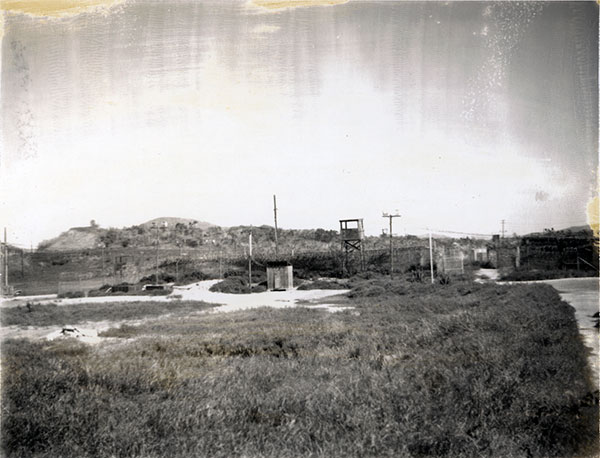

Camp X-Ray, Guantanamo Bay
Edition of 100Hahnemuhle Fine Art Paper
8x10", 11x14", and 16x20"


Christopher Sims was born in Michigan and raised in Atlanta, Georgia. He has an undergraduate degree in history from Duke University, a master's degree in visual communication from the University of North Carolina at Chapel Hill, and a M.F.A. in studio art from the Maryland Institute College of Art. He worked as a photo archivist at the U.S. Holocaust Memorial Museum in Washington, D.C. and currently teaches photography at the Center for Documentary Studies at Duke University.
His most recent exhibitions include shows at SF Camerawork, the Griffin Museum of Photography, the Houston Center for Photography, the Light Factory, the Southeastern Center for Contemporary Art, and the Halsey Institute of Contemporary Art. His recent project on Guantanamo Bay was featured in The Washington Post, the BBC World Service, Roll Call, and Flavorwire. In 2010, he was selected as the recipient of the Baum Award for Emerging American Photographers.
ABOUT THE PIECE:
I made this exposure in 2006, on my first of two trips to the U.S. military installation at Guantanamo Bay, Cuba. The vast majority of the images I made in Guantanamo Bay were with a digital camera, in line with the ground rules established by the U.S. military: any visiting photographer must agree to make only digital photographs, as censors review all images before you can depart the base. After months of negotiations before my trip, the authorities permitted me to make a small number of Polaroid Type 55 positive/negative images during my visit, and these are likely the only film-based images of Guantanamo Bay made by someone outside of the military since the prison camps were established in 2002. The Polaroid Type 55 film I used --- processed on the spot using a small batch of chemicals --- results in a film negative as well as a positive print, and thus provides an analog work-around to the military's review requirements. Soldiers who were initially skeptical of this exception to the rules were in turn intrigued and fascinated by this seemingly primitive, non-digital process, carefully studying and inspecting the sticky, peeled print as it came loose from the film backing while we stood among the open air structures of Camp X-Ray.
Utilized for four months in early 2002, Camp X-Ray was the first, temporary detention facility of the Joint Task Force in Guantanamo Bay, and has subsequently been the subject of much controversy. Since my initial visit in 2006, the grounds of Camp X-Ray are now off-limits and are being preserved in situ for legal and forensic reasons.